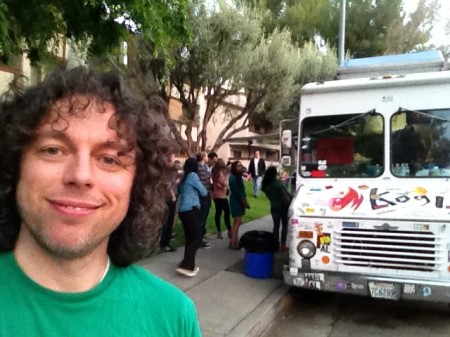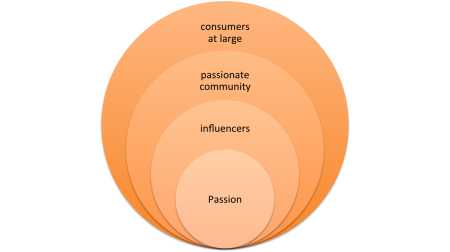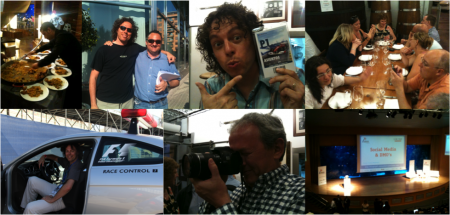The Archives
-
Experience Design, Marketing, Travel & Tourism
Cascading influence in tourism marketing
05.16.12 | Permalink | 4 Comments
I’m not a foodie. But I like food. I like cooking. I like to eat good food. I like authentic experiences. I like holes in the wall. I once drove 5 hours to eat deep fried cheese. And when I was in LA last month I drove an hour to visit the Kogi food truck (photo). But I don’t really watch food shows, read food blogs or base every restaurant I visit on reviews on Yelp or Tripadvisor.
I have friends for that.
My friend Stephanie is a foodie. She tries crazy recipes and knows about all the new and hot restaurants in town. And beyond. There aren’t a lot of cities I travel to where she doesn’t know of someplace amazing.
Stephanie is not a big food influencer. She doesn’t blog, doesn’t take photos of her food, she doesn’t pin food recipes. She does influence her friends though. In person or on Facebook. And if she recommends a restaurant, I’m going.
I’m not a foodie. But I’m influenced by one.
Stephanie in turn, is influenced by a host of people who share her obsession with food. She’s part of a passionate community of foodies. A lot of her friends are foodies, she watches Food TV, reads a lot of food blogs, is active on Chow and follows celebrity chefs on Twitter.
Stephanie is a foodie. She makes her decisions based on information from influencers in the foodie community.

The example above is the essence of modern tourism marketing. Restaurants will get people like me in the door because I’m influenced by a foodie, who in turn is influenced by leaders in the foodie community.
As a marketer, you need to approach this in reverse. Activate the influencers who connect with the passionate community, who in turn connect with consumers at large.
This works for any kind of niche. Hiking, skiing, modern art, theatre, gambling, roller coasters, etc. There are thousands of passionate communities and each community, large or small, has influencers. It’s just a matter of activating it.
As a tourism marketer you need to identify your niches and ensure the delivery of your experience is remarkable so people will recommend your destination or product. It will start a cascading effect that produces long term results.
-
leadership, Marketing, social media, Travel & Tourism
I’ve seen the future of travel media
08.30.11 | Permalink | 13 Comments
Steve Keenan, online travel editor from the London Sunday Times summarizes Valencia’s unique approach to a media/blogging famValencia Leads
A few weeks ago the Valencia Tourism Region hosted a blog trip (#blogtripF1) and it could very well be the new standard for DMOs to model their traditional media trips or media fams after. I was fortunate enough to be invited on the trip.
Valencia Tourism invited a mix of traditional journalist, travel bloggers, social media travel, web technology and web design professionals. These people of all ages, with diverse skill-sets and interests where hosted on a four day event centred around Valencia and the Formula One Grand Prix.
It included all the hallmarks of a traditional media trip. Visits to the best restaurants, the top sights, attractions and accommodations. The trip included private guides and behind the scenes tours, all well organized as you can expect from any respectable DMO.

Making the media trip social
Valencia Tourism innovated the traditional trip by creating a place for these professionals to collaborate, discuss, debate and most of all develop new relationships. Social Media professionals are social by definition and unlike traditional journalists who are more driven by exclusivity, bloggers understand their individual success is strengthened by the success of their relationships and their network.Taking advantage of educational opportunities
The place to kick-off the discussion was at a conference where attendees presented a topic related to their area of expertise (videos of presentations here). The event was attended by many local, national DMO’s and operators. A great way to get Tourism Valencia’s stakeholders access to the knowledge in the group.Fostering the creation of networks
Over the next few days we got to know each other very well. There was enough time and opportunity to do so. We discussed and debated all topics digital travel professionals are interested in. And everything was tweeted in real time of course, creating a surge of Valencia exposure in real time, across many people’s personal and professional networks.
Creating remarkable experiences
Remarkable experiences turn into social objects, shared in social media. These are the things worth blogging, tweeting and Facebooking about. There were plenty in Valencia. Walking on top of a shark tank, eating the best Paella, incredibly photogenic modern architecture, random bars, more great food and of course the F1 race.Remarkable experiences was also the subject of my presentation, summarized in this interview
Build in surprises
Exclusive access, or including things money can’t buy will generate even more conversations. The trip offered personalized surprises such as a visit to the F1 paddock, a ride down the track in the safety car and even a drive in a converted 3-seater Formula One car for some.Results
The tally so far? By the last count I’ve heard a while back a few dozen blog posts have been written, 61 YouTube videos created, 363 people tweeted 1,558 tweets reaching over 2 million people all around the world while articles in traditional media are being written.But the real value is not just the immediate exposure but the fact that Valencia sits at the centre of a strong network of travel bloggers and tourism professionals including their expended networks. Valencia will always be top op mind when I connect with any of the new friends I’ve made.
Promoting by focussing on building networks and putting yourself in the middle of it. That’s the future. Valencia has re-invented itself over the last years with new tourism attractions, infrastructure and mega-events. They’re doing the same with destination marketing.
Congratulations Joantxo and Arantxa, you’re setting the new standard for travel media.

Valencia’s City of Arts and Sciences – Photo by Sherry Ott

